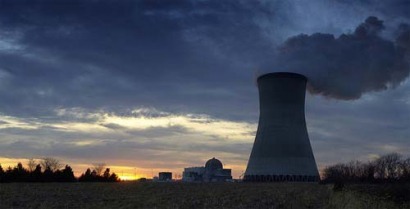
The Greenpeace report, The Silent Energy Revolution: 20 Years in the Making, also highlights how renewable energy power plants accounted for more than a quarter (26%) of all new power plants added to the worldwide electricity grid over the past decade, compared to nuclear power stations representing just 2% of new installations in the same period.
“With renewable energy now the world’s fastest growing source of power plant installations, governments can make a simple, clear choice”, said Greenpeace International Senior Renewable Energy Expert Sven Teske. “They can commit to a future shackled to dirty and dangerous fossil fuels, or they can kick start an energy revolution [2] by implementing renewable energy laws across the globe, and leading investment in a renewable energy future that will not only boost global economic development and create green jobs, but will also play a key role in mitigating climate change”. The Silent Energy Revolution report shows that while the global wind industry added some 35,000 MW of capacity in 2010 alone, it took the global nuclear industry a full ten years to achieve this (2000-2010). During the same period, new coal installations went into decline in every country except China, where almost 80% of the world’s new coal plants went into operation in the last decade. However, not only has China phased out around some of its dirtiest coal plants over the last five years, it has also increased its domestic wind market, doubling capacity every year since 2003.
“The clear trend away from coal and nuclear power plants towards renewable power plants is a massive step in the right direction,” said Teske. “But it’s not time to claim a victory for renewable energy just yet, when new coal power plants, responsible for emitting billions of tonnes of carbon dioxide, continue to be connected to the grid – mainly in China. However, the good news is that China’s renewable energy industry is developing rapidly. Since 2009, more money has been invested in China’s renewables industry than in coal for the first time.”
A regional analysis for the USA and Europe in The Silent Energy Revolution shows that the liberalisation of electricity markets is leading to fewer investments in new power plants and the lifetime extension of existing ones. New coal and nuclear power plants made up just 10% of installations in the US and Europe between 2000 and 2010, with the dominant new power plant technology being gas. The growing share of renewables in both regions, especially wind and solar photovoltaic, are thanks to legally binding targets for renewable energy policies, such as feed-in laws. Overall, new installations of power plant capacity in Europe in 2010 jumped to a record high, due to the repowering needs of the aging power plant fleet.
“Governments need to ensure this trend continues, by championing the transition towards a 100% renewable energy supply”, Teske said. “In particular, North America and Europe need to take the lead on a faster deployment of new renewables, while retiring old coal power stations, if we are to achieve the reductions in emissions that are urgently required to save our climate”.
Notes
• 1. Renewable energy power plants grew by 26%, compared with 9% for gas and 8% for coal. The Silent Energy Revolution: 20 years in the Making.
• 2. Greenpeace’s Energy [R]evolution offers a sustainable path to quit dirty, dangerous fuels by transitioning to renewable energy and energy efficiency.
For additional information:

